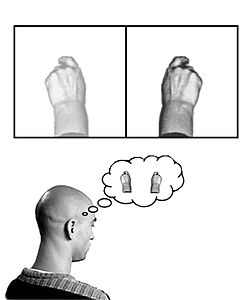 Paralysis of the arm or leg is common after stroke and frequently causes problems with activities of daily living such as walking, dressing or eating. Mirror therapy is used to improve motor function after stroke. During mirror therapy, a mirror is placed in the patient’s midsagittal plane, thus reflecting movements of the non-paretic side as if it were the affected side. The objective of this Cochrane reviw was to summarise the effectiveness of mirror therapy for improving motor function, activities of daily living, pain and visuospatial neglect in patients after stroke. 14 studies with a total of 567 participants that compared mirror therapy with other interventions were compared.
Paralysis of the arm or leg is common after stroke and frequently causes problems with activities of daily living such as walking, dressing or eating. Mirror therapy is used to improve motor function after stroke. During mirror therapy, a mirror is placed in the patient’s midsagittal plane, thus reflecting movements of the non-paretic side as if it were the affected side. The objective of this Cochrane reviw was to summarise the effectiveness of mirror therapy for improving motor function, activities of daily living, pain and visuospatial neglect in patients after stroke. 14 studies with a total of 567 participants that compared mirror therapy with other interventions were compared.
At the end of treatment, mirror therapy improved movement of the affected limb and the ability to carry out daily activities. Mirror therapy reduced pain after stroke, but only in patients with a complex regional pain syndrome. The beneficial effects on movement were maintained for six months, but not in all study groups. No adverse side effects were reported. Further research is needed with larger studies in natural clinical settings, and with a comparison of mirror therapy with more routine treatments.